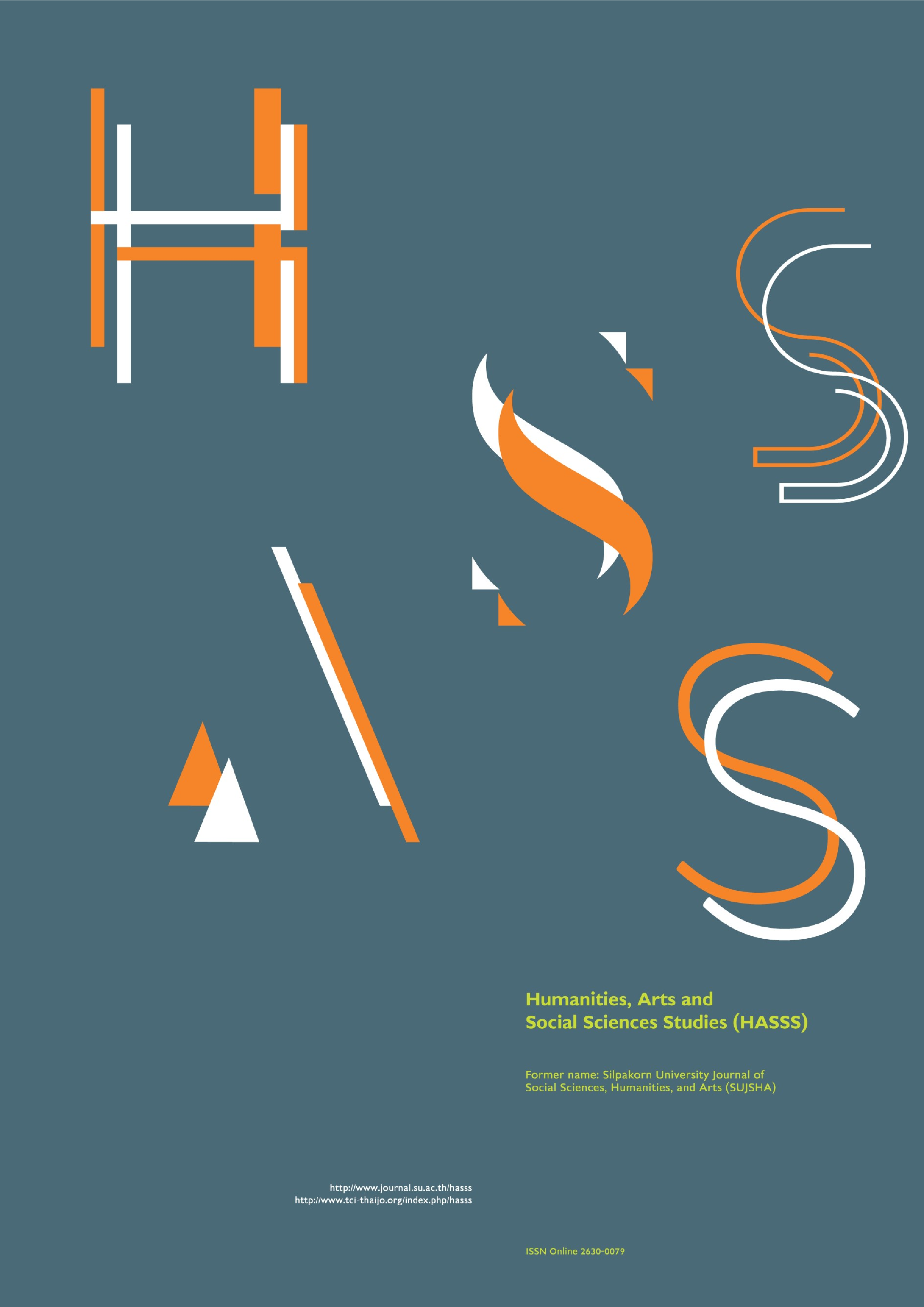Techniques for the identity connection of disguised characters in Thai classical literary work for imaginary creation: “The tale of Khun Chang Khun Phaen: Phlai Chumphon fights Thera Khwat”
Main Article Content
Abstract
The techniques for the identity connection of disguised characters were intended to be used to study the disguised character connection with the guidelines on imaginary creation based on the principles of visual arts. Creation was achieved primarily following the concepts of personification that came from the imagination of the creators. Scientific principles based on reality were used by focusing on the hormonal changes in the human body in a short time. Communication through Thai classical literature was also utilized. The personalities of the characters were the point of focus by decoding their identities from the literature to the knowledge of the character connection. This led to the identity connection of the disguised characters for the imaginary creation in a comic by using the characters, conversations, scenes, and transferring the elements through the disguised characters in Thai classical literature. In this study, “The Tale of Khun Chang Khun Phaen: Phlai Chumpon fights Thera Khwat” was used as the case study. Four styles of connection were used comprising moment-moment, action-action, subject-subject, and aspect-aspect in accordance with the cartoon study framework by McCloud. According to the work creation following the identity connection of the disguised characters, it was found that the most suitable styles for storytelling were moment-moment, action-action, and subject-subject for the character connection and to make them look realistic, mainly because these styles tended to make it easy for following the identity connection of the disguised characters as well as transferring the story elements so readers could easily understand and conduct a follow-up. The prominent features of the characters were inserted, which possibly appeared as wounds that indicated the examination of the personal identity to show the unique characteristics of that character. The key point was the common identity connection that would be the common aims of the characters.
Downloads
Article Details

This work is licensed under a Creative Commons Attribution-NonCommercial-NoDerivatives 4.0 International License.
All rights reserved. Apart from citations for the purposes of research, private study, or criticism and review,no part of this publication may be reproduced, stored or transmitted in any other form without prior written permission by the publisher.
References
Fine Arts Department. (2019). The Tale of Khun Chang Khun Phaen. Bangkok: Fine Arts Department. [in Thai]
Freud, S. (1923). The Standard Edition of the Complete Psychological Works of Sigmund Freud, Volume 19 (1923-1925): The Ego and the Id and Other Works. London: Vintage Publishing.
Leedy, P. D. and Ormrod, J. E. (2013). Practical Research: Planning and Design. 10th ed. New Jersey: Prentice Hall.
McCloud, S. (2016). Understanding Comics: The Invisible Art, translated by C. Isornworaphan and M. Kittiaraponpol. Bangkok: Art4d. (Original work published 1994)
Palitponganpim, P. (2003). Looking for Cartoon. Bangkok: Matichonbook. [in Thai]
Patamacharoen, R. (2002). Cartoon 5 Baht and Cultural Society. Rusamilae Journal 23(2-3): 104-106. [in Thai]
Pesopas, T. (2016). Basic Character Design for The Children. Sripatum Chonburi Journal 12(5): 181-189. [in Thai]
Phyathai Hospital. (2018). 8 Important Hormones of the Body that Must Be Known and Handled. [Online URL: https://www.phyathai.com/article_detail/2561/th/diabetes,complication,drink,alcohol] accessed on January 10, 2021. [in Thai]
Plaengsorn, A. (2017). Identification. [Online URL: http://med.swu.ac.th/forensic/images/AP_Identification(new)%201_60.pdf] accessed on January 2, 2021. [in Thai]
Royal Institute of Thailand. (2003). The Royal Institute Dictionary B.E. 2542. Bangkok: Nanmeebooks. [in Thai]
Suwannathada, N. (1990). Authorship Thai literature. Nonthaburi: Sukhothai Thammathirat University Press. [in Thai]


